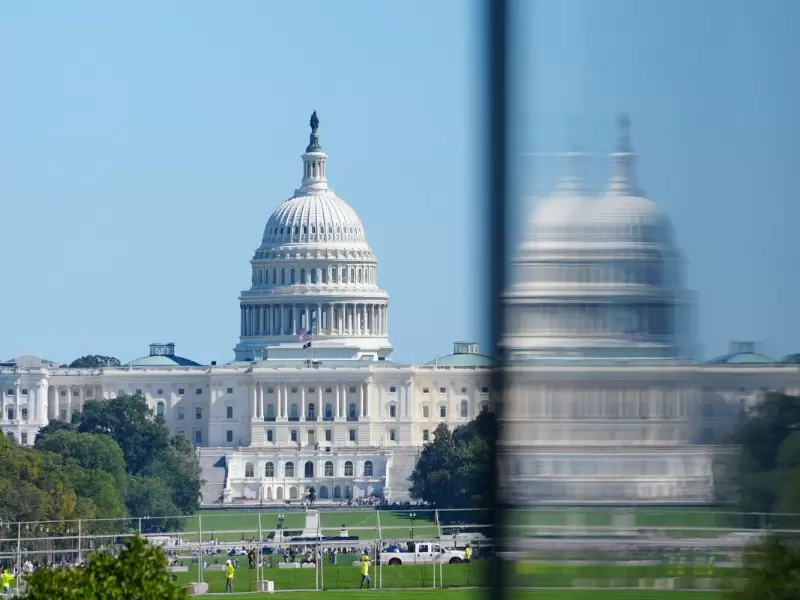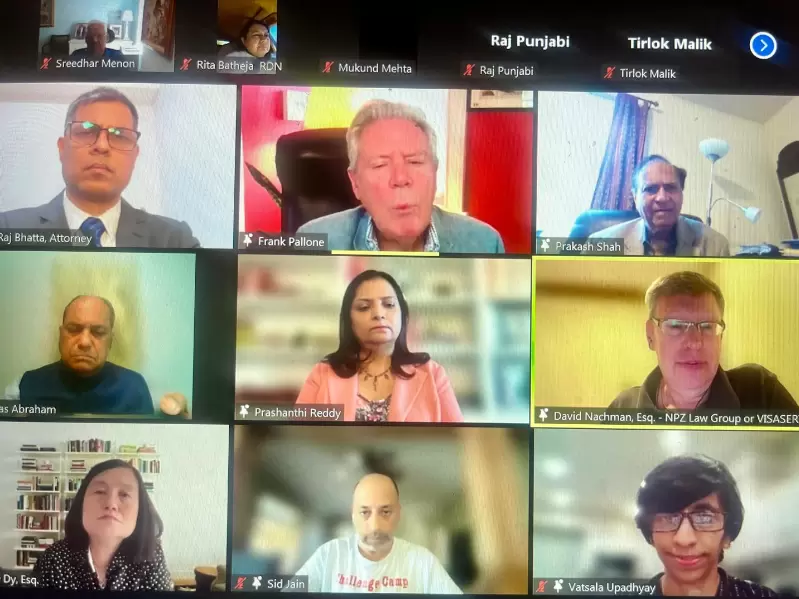US federal shutdown enters sixth day as threat of layoffs looms
White House threats of mass layoffs escalate tensions as Senate deadlocks over funding bills and healthcare demands.
 People walk near the U.S. Capitol Building during the fifth day of a partial government shutdown in Washington, D.C., U.S., October 5, 2025. / REUTERS/Aaron Schwartz
People walk near the U.S. Capitol Building during the fifth day of a partial government shutdown in Washington, D.C., U.S., October 5, 2025. / REUTERS/Aaron Schwartz
The U.S. government shutdown entered its sixth day on Oct. 6, with President Donald Trump's Republicans and congressional Democrats still at an impasse and the White House threatening to ramp up pressure by ordering mass layoffs of federal workers.
The Republican-led Senate was slated to vote again on dueling measures to fund federal agencies, including a Republican stopgap bill approved by the House of Representatives that would fund operations through Nov. 21 and a Democratic alternative. Neither was expected to receive the 60 votes needed to advance.
Asked on the night of Oct. 5 when the government would begin laying off federal workers, Trump said, "It's taking place right now." He blamed Democrats for the impasse but did not elaborate on the layoff plans. The White House has said thousands could be fired if the shutdown persists.
Also Read: What would it take to avoid a US government shutdown?
Trump's budget director, Russell Vought, has already frozen at least $28 billion in infrastructure funds for New York, California and Illinois—all home to sizable Democratic populations and critics of the president.
Trump and his Republican allies have also taunted Democrats on social media with deepfake videos drawing on Mexican stereotypes with images that Vice President JD Vance described as a joke.
But Democratic leaders showed no sign of knuckling under to the White House's hardball tactics, which have caused unease among some centrist Republicans who fear the approach could make the impasse harder to overcome.
"What we've seen is negotiation through deepfake videos, the House canceling votes, and, of course, President Trump spending yesterday on the golf course. That's not responsible behavior," House Democratic leader Hakeem Jeffries told NBC's "Meet the Press."
The partial shutdown, the 15th since 1981, was tied for the fourth-longest in U.S. history on Oct. 6, matching the six-day length of a 1995 shutdown that began after then-President Bill Clinton vetoed a Republican spending bill. The longest shutdown lasted 35 days in 2018-2019, during Trump's first term in office.
Health insurance is a democratic priority
Senate Democrats, who are demanding a permanent extension of federal subsidies to help people afford health insurance under the Affordable Care Act, have voted down the House-approved funding bill, known as a continuing resolution or CR, four times.
With a 53-47 seat majority and one Republican opposed to the CR, Republican leaders need at least eight Democrats to support their funding legislation. But only two Democrats and an independent who caucuses with them have crossed the aisle so far.
"All we have to do is get five more Democrats to vote 'yes,' the government opens up, and then we can start talking about all these other things they want to have conversations about," Senate Majority Leader John Thune said on the Fox News program "Sunday Morning Futures."
But efforts to strike a deal have gone nowhere so far.
"In those conversations, the Republicans offered nothing," said Senate Democratic leader Chuck Schumer, who said that any breakthrough would depend on a deal among him, Trump, Thune, Jeffries and House Speaker Mike Johnson.
Some Democrats want a deal on ACA healthcare subsidies in place before open enrollment for next year begins on Nov. 1.
"We have to get this done by Nov. 1," Democratic Senator Ruben Gallego told CNN, warning that missing that date would mean higher healthcare costs for enrollees and possibly no insurance coverage at all.
Democrats also want protection against White House actions to withhold or cancel funding allocated by Congress.
"If we agree to a CR and nothing more, they're telling us, 'We don't plan to abide by it,'" Democratic Senator Adam Schiff told NBC. "We need some written assurance in the law. I won't take a promise that they're not going to renege on any deal we make."
The standoff has frozen about $1.7 trillion in funds for agency operations, which amounts to roughly one-quarter of annual federal spending. Much of the remainder goes to health and retirement programs and interest payments on the growing $37.5 trillion debt.




 Reuters
Reuters














Comments
Start the conversation
Become a member of New India Abroad to start commenting.
Sign Up Now
Already have an account? Login